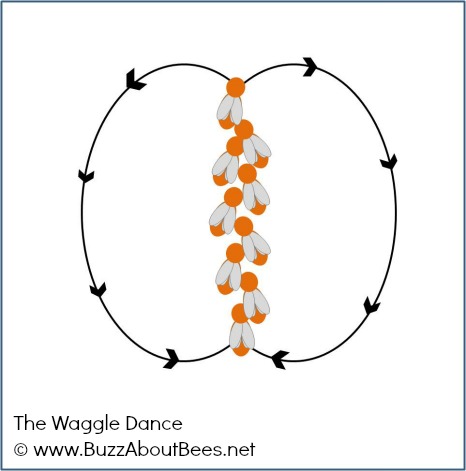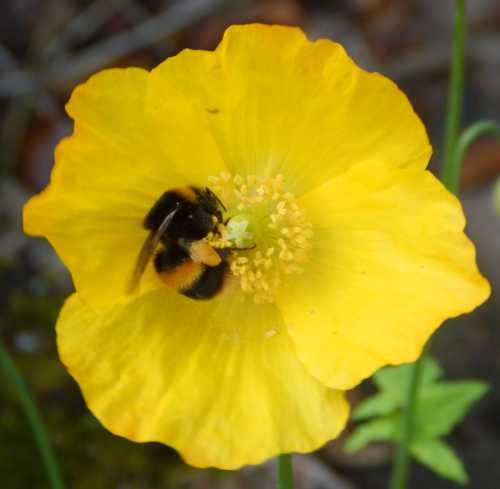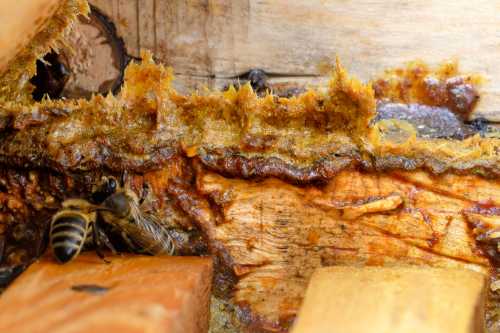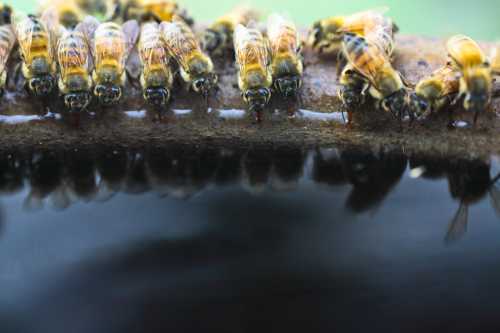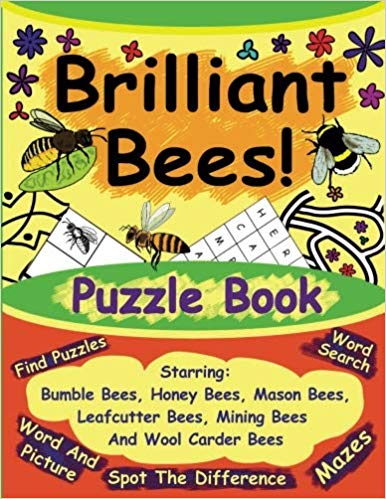The Honey Bee Dance
The honey bee dance – also known as the waggle dance, is a form of communication performed by worker honey bees to other members of the honey bee colony.
The waggle dance was famously decoded by Austrian scientist, Karl von Frisch – more about that later.
Here you can
learn about when, why and where honey bees perform the waggle dance. You can also read about which
bees perform the dance, and its meaning.
When,
why and where do honey bees perform a waggle dance?
As far as we know, the honey bee waggle dance is performed to communicate the location of a good source of food (nectar rich flowers), or water, and also to describe the whereabouts of the site of a potential new home for a swarming bee colony.
Research suggests individual honey bees may also perform a dance when they wish to be cleaned (groomed) by other bees.
Waggle dancing to locate a source of food
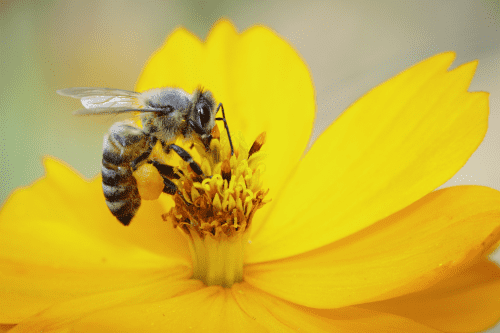
A honey bee colony consists of thousands and thousands of workers, with each of
the workers performing varied roles within this amazing superorganism as it
matures.
The role of forager is performed by worker bees of around 20 or more days old. When foraging worker honey bees fly out of the nest or hive, they seek flowers from which they will gather nectar and/or pollen within a foraging range that could extend several kilometers from the nest or hive.
Upon finding
a suitable source of nectar, they gather it, and return and perform a waggle dance to tell other colony members about the location of the food they have brought back home.
This waggle dance takes place inside the nest, on top of the comb.
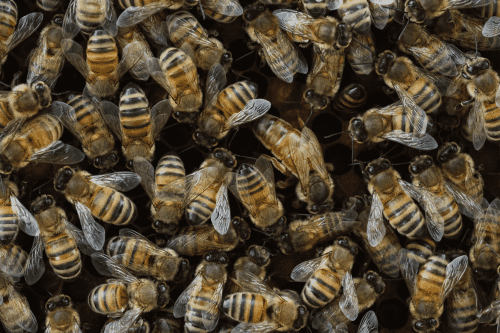
Do bees automatically follow the instructions, or do bees 'do their own thing' and find their own patch of flowers?
Research suggests that the waggle dance is an important means by which the more experienced foraging worker bees recruit and assist the less experienced novices (bees new to foraging).
Indeed, Biesmeijer and Seeley (2005) showed that novice foragers depended on information from waggle dances to help them locate flowers 60% of the time.
Waggle dancing to communicate the location of water
For various reasons, through the year, a number of honey bee workers will need to collect water. (See Do Bees Drink Water?)
Honey bees that find water will use a dance to communicate the location to fellow colony members.
Waggle dancing to locate a potential new nest site
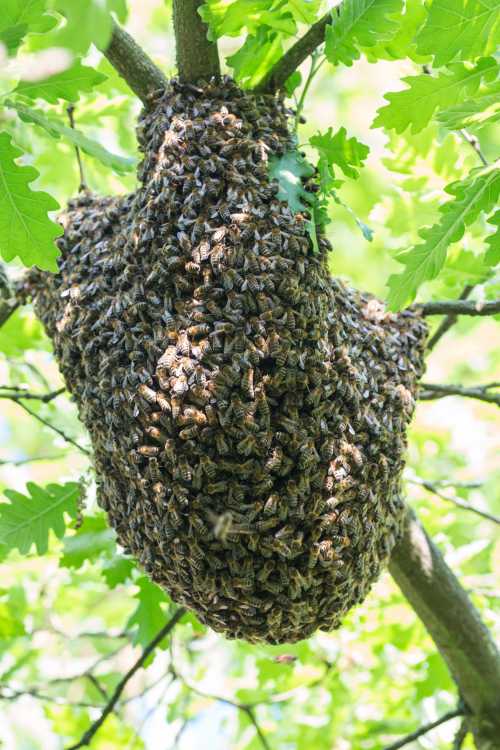 Honey bee workers with queen
Honey bee workers with queenIn an amazing display of collective consciousness (or 'hive mind'), a swarm of honey bees is on the look out for a new home.
In the search for a new place to live, most of the bees remain in the swarm (in the form of a mass or clump) around a queen, whilst the searching for possible nest sites is performed by scout bees, who are mature worker bees.
Upon finding a possible site, scout bees return to the swarm, and perform a waggle dance to communicate its whereabouts.
This waggle dance takes place actually on the swarm itself, with the scout honey bee literally trampling over other bees whilst she performs the dance on the outer layer of the swarm to communicate the position of the site.
Here is a short video showing the dance of a scout bee on a swarm (continue reading for a detailed description of the dance itself).
The Meaning of The Honey Bee Dance
Upon returning to her colony (whether it be back at the nest or hive, or in a swarm), an excited honey bee performs a type of round dance, with intermittent waggles of her tail and ‘buzzing’ of her wings.
Each waggle dance consists of a series of dance circuits, and each dance circuit contains a waggle run and a return run, which is a miniaturized re-enactment of her recent trip over the countryside.
It can be described as follows:
- First the
dancer walks straight ahead, waggling her body from side to side (a “waggle
run”).
- She then
stops and turns left or right to make a semi-circular “return run” back to her original
starting point.
- Upon her
return to start point, she performs another waggle run followed by another
return to start, and so on.
- The duration
of the waggle run is directly proportional to the
length of the outward journey, and both duration and rate of waggle-run production increase with rising food-source profitability.
On average, one second of the total dance (including tail wagging and wing buzzing) represents some 1km (1,000 meters or six-tenths of a mile) of flight. - Bees have an
internal sun compass (or internal clock) and use solar navigation in the dance. The angle of the waggle run, relative to 'straight up' on the vertical comb or swarm clump, represents the angle of the
outward journey relative to the direction of the sun.
In other words, if the forager or scout bee walks directly upward while producing a waggle run, she is telling the other colony members to head toward the sun (i.e. the feeding place (patch of flowers) is in the same direction as the sun).
Alternatively, if the dancing bee heads 40 degrees to the right of vertical, her message to other colony members is that the site is 40 degrees to the right of the sun. - The clever honey bee can even take into account the amount of wind! A strong headwind will cause the bee to dance as if the food was further away, thus indicating that more energy will be expended to reach this source of food.
Video of the honey bee waggle dance
Here is a more detailed video explaining the waggle dance of the worker honey bee forager.
Karl
von Frisch: Decoding the honey bee
waggle dance
Born in Vienna, Austria, Karl von Frisch was and ethologist. An ethologist is a scientist who studies the behaviour of animals in their natural environment. He worked in the department of zoology at the University of Munich in Germany.
He began studying
and decoding the waggle dance in 1944, and published “Die Tänze der Bienen” (The
Dance of the Bees) in 1946, in which he demonstrated how successful honey bee
foragers perform a dance to communicate the location of valuable food resources
to fellow colony members back at the hive.
In recognition of his discovery, von Frisch won the Nobel Prize in 1973.
The work of von Frisch was the starting point of many subsequent areas of investigation into honey bee communication, for example by Martin Lindauer and notable author and professor Thomas D. Seeley.
Seeley has conducted much research about the lives of honey bees, and explored collective consciousness (or hive mind) in the colony.
A dance to say 'please clean me'!
In their research entitled: The grooming invitation dance of the honey bee, Land and Seeley state that the grooming invitation dance is a striking behavior in honey bee colonies, during which a worker bee stands stationary and vibrates her whole body from side-to-side, sometimes adding brief bouts of self-grooming.
Bees that perform the grooming invitation dance have a far higher probability of being quickly groomed by a nest mate than do bees that do not perform the dance.
Grooming is an important method for bees to clean themselves and each other.
You can read more about this, on my page How Do Bees Clean Themselves, Each Other And The Nest or Hive?
Resources
- Seeley Thomas, D, Honeybee Democracy.
- Barron A, Srinivasan MV. Visual regulation of ground speed and headwind compensation in freely flying honey bees (Apis mellifera L.). Journal of Experimental Biology. 2006;209(5):978–984. pmid:16481586
- Seeley TD, Mikheyev AS, Pagano GJ. Dancing bees tune both duration and rate of waggle-run production in relation to nectar-source profitability. Journal of Comparative Physiology - A Sensory, Neural, and Behavioral Physiology. 2000;186(9):813–819.
- Biesmeijer & Seely (2005). The use of waggle dance information by honey bees throughout their foraging careers. Behavioral Ecology and Sociobiology., 59, 133–142.
- Land, B. B. & Seeley, T. D. The grooming invitation dance of the honey bee. Ethology 110, 1–10 (2004).
If you found this page helpful or interesting, I'd really be grateful if you would share it with others - if not this page, perhaps another, such as Gardening For Bees.
Thank you so much :) .
